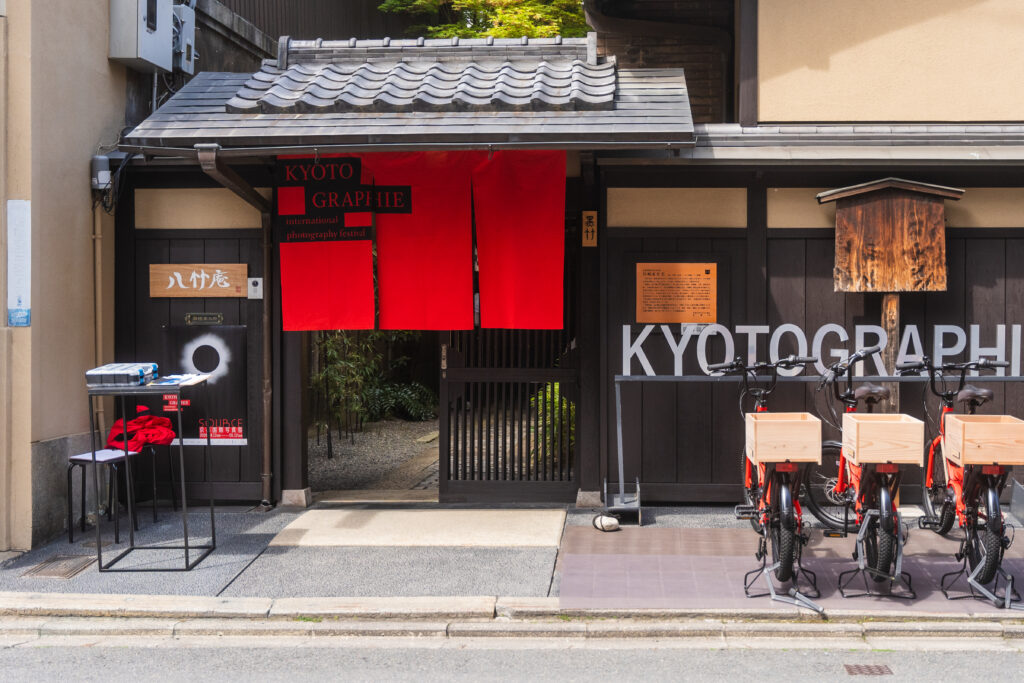

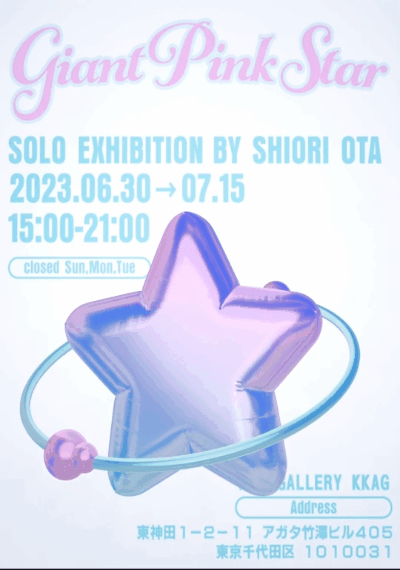
Shiori Ota Photo Show “Giant Pink Star” Pre-show Interview
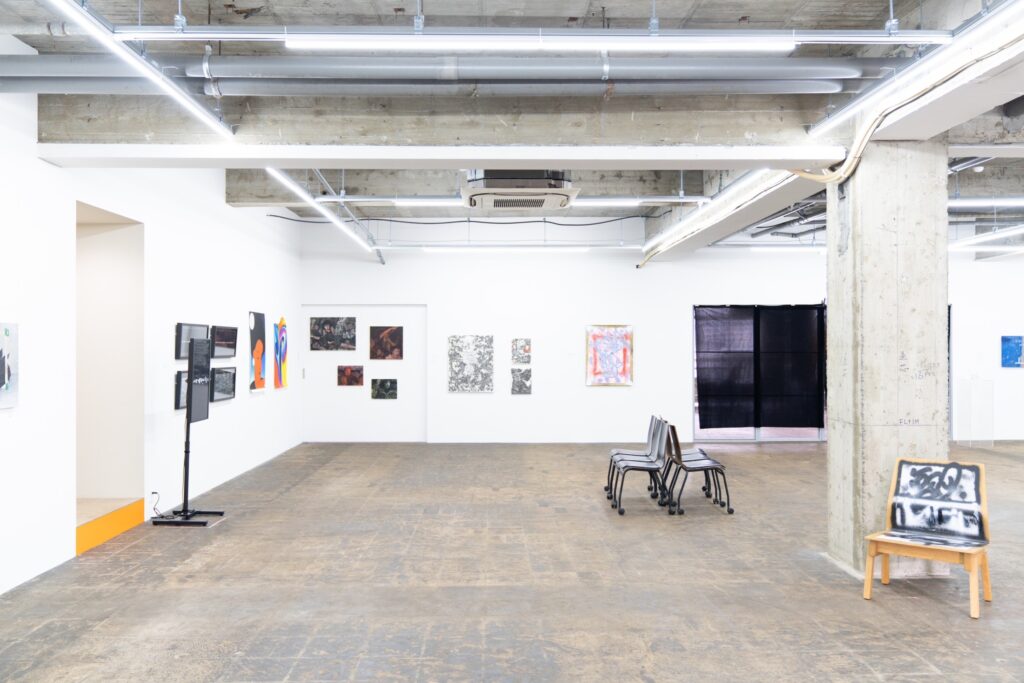
OVERGROUND “SCREW DRIVER ART SHOW” -Interview with Yurika Matsumura-
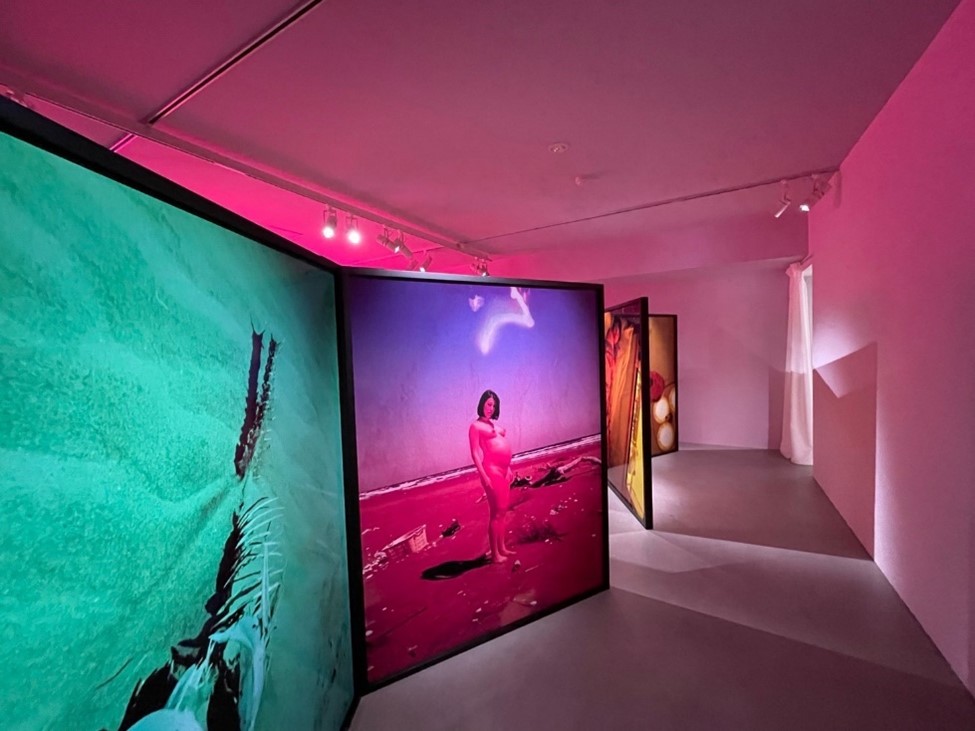
Kyoto “Art” Calling -KYOTOGRAPHIE Report 2023-
Edit & Translation: Fuko Matsumoto
Photo: Karolina Höglind
Model: Zara Hinton
11回目になるKYOTOGRAPHIE取材の為に今回Woolyは、開催から特別チーム組んでオフィシャル取材を敢行した。
KYOTOGRAPHIEの今回のテーマ”border”
イギリス、スウェーデン、福岡、東京とボーダレスにスタッフィングでチームWooly5名は、4日間を費やし気になる展示会場へと文散と再集合を幾度と繰り返しKYOTOGRAPHIEの”境界線”を探検した。
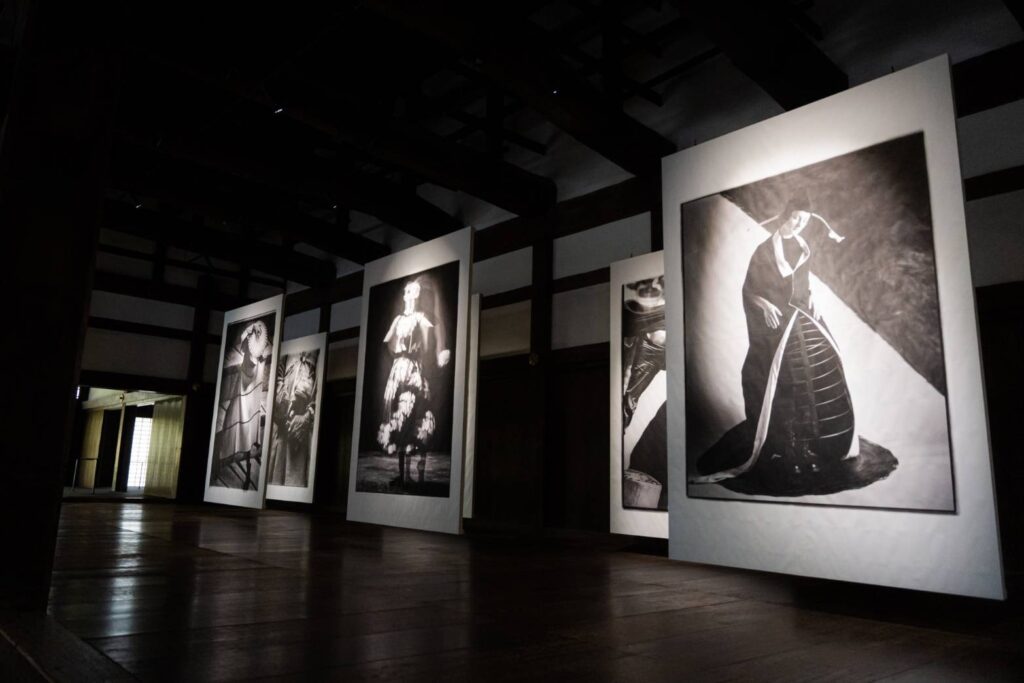
二条城二の丸御殿の台所、御清所で開催された高木由利子の展示 ”Parallel World”
今年春、京都の町が、巨大な現代アートの美術館に変貌した、一ヶ月間限定の。
今年で11回目となるKYOTOGRAPHIEは、写真アートを中心に国内外の現代アートを、15ヶ所の会場にわたってに展示し、サテライトフェスティバルkg+でさらに100ヶ所のスポットで展示される。世界でも稀有な意欲的アートフェスだ。
“境界線”というテーマで開催された今回のKYOTOGRAPHIEで、私たちWooly編集部が最も印象深く感銘したのが、二条城で繰り広げられた写真家高木由利子のエキシビションだった。
世界遺産である二条城の、二の丸御殿に6つのギャラリースペース、1つのmovie roomさらに外には、野外展示スペースとしてgardenが加えられている。
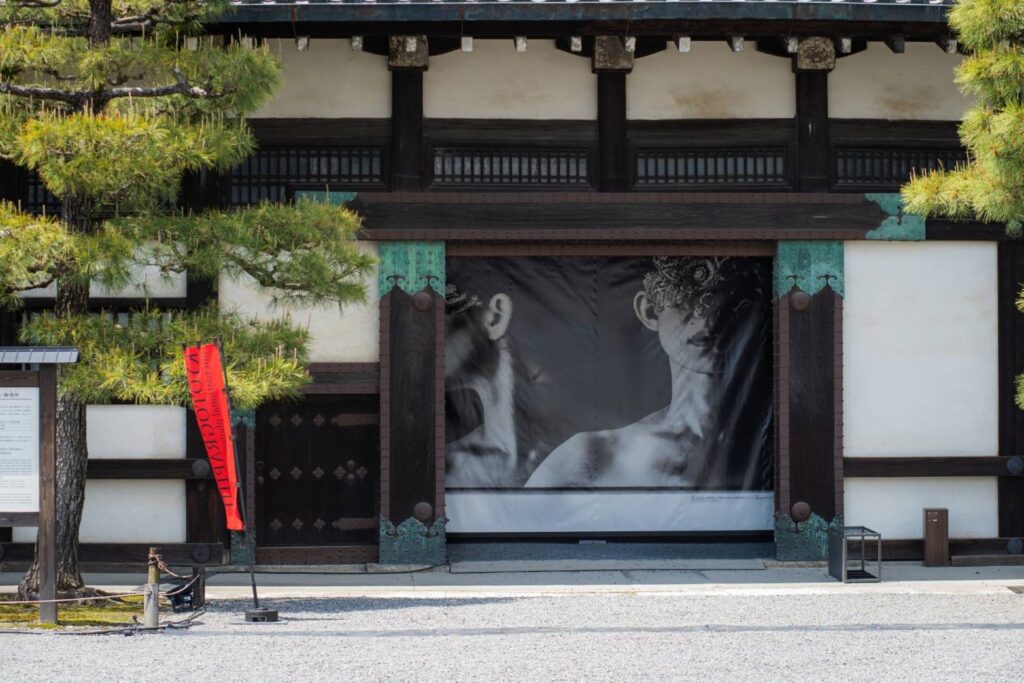
二条城二の丸御殿の台所、御清所で開催された高木由利子の展示 ”Parallel World”へのエントランス
全150に及ぶ作品が、古代の重厚な建造物の空間に 見事に調和した形で、展示されているのは圧巻だ。大きな屏風絵のように立ち上がる民族衣装と最先端モードのファッションフォトの交錯。作家の幅広い分野での探求心と歴史を深掘りする洞察力が、世界遺産の空間に鎮座し、溶け込み、そして烈しく発光する。私たちはただただ時空を越えた芸術と建築と人間の巧みに呆然と立ち尽くす。
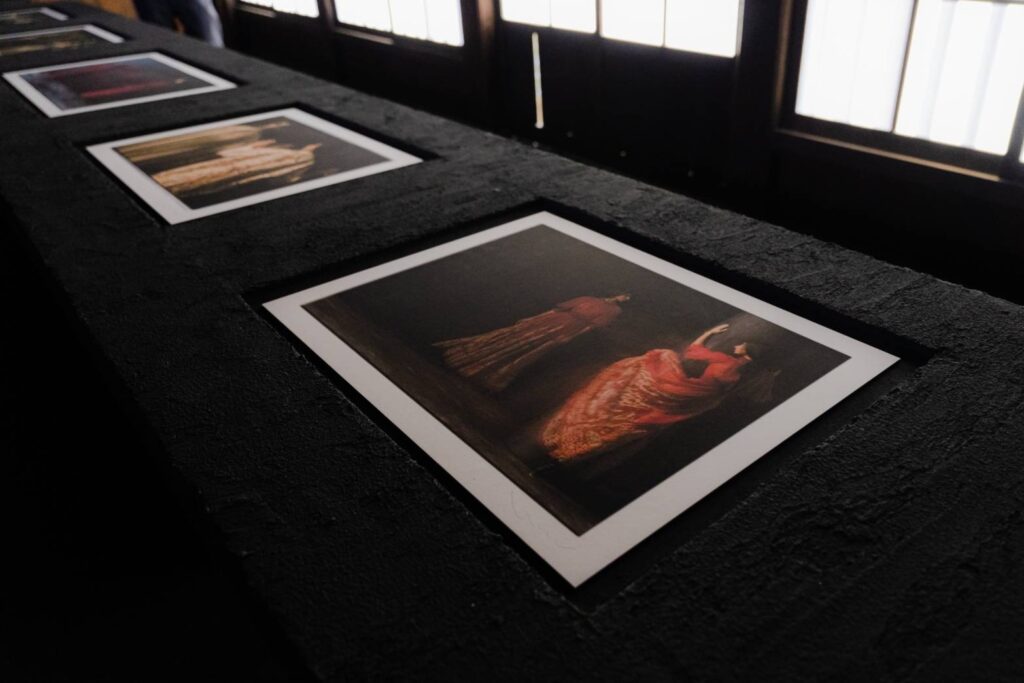
二条城二の丸御殿の台所、御清所で開催された高木由利子の展示 ”Parallel World”
絶妙で野心的なインストール、空間演出は、本誌でもインタビューで登場していただいた田根剛氏、世界の美術館、芸術家が今彼を追いかけオファーを試みる理由も、ここにあった。
Wooly編集部のOGでありモデルのZaraも今回のオフィシャルチームに参加、英国人の視点で観た壮大な和と芸術のコラボレーションについてインタビューした。
A short interview with Zara
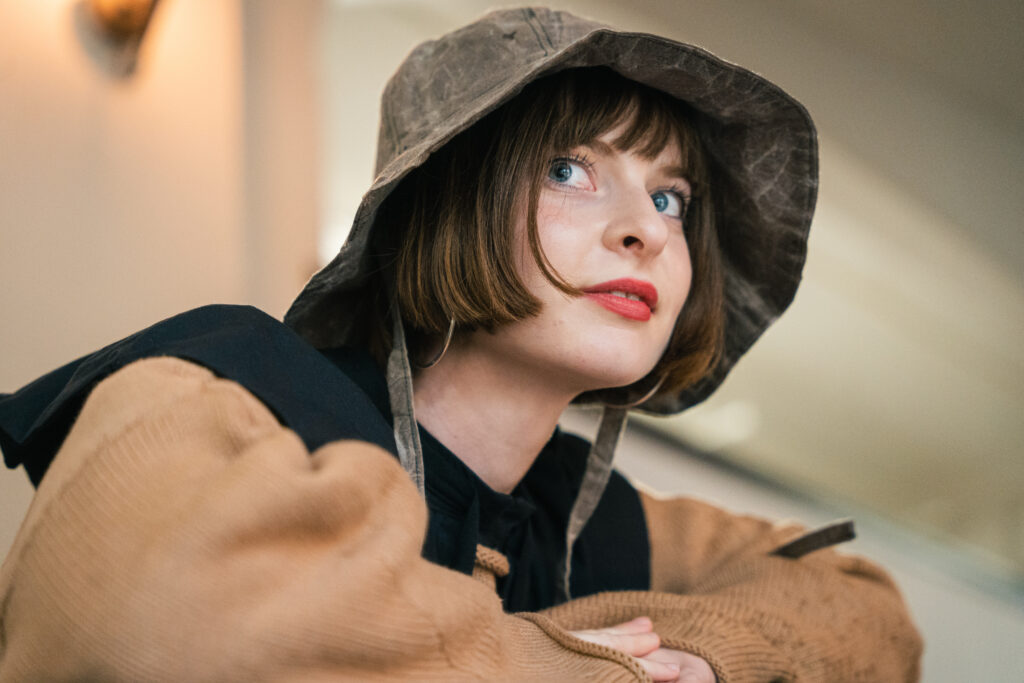
イベントの全体的な印象はどうでしたか?
Zara: 何も期待を持たずに行ったので、フェスティバルがこんな数多くの展示で構成されていたのにびっくりした。建物自体はすべて近い範囲に点在していた。例えばーもちろん二条城の展示が一番だったけどー世界倉庫というところの展示も良かった。そこにはデニス・モリスの展示があって、この新しいスペースの2階にあった。実は“WORLD KYOTO”というクラブとのパートナーシップで、7年前私が行ったところだった。でもコロナで人々がクラブに行けなくなったことで、もっとコロナフレンドリーな場所に変わっていた。それが面白かった。
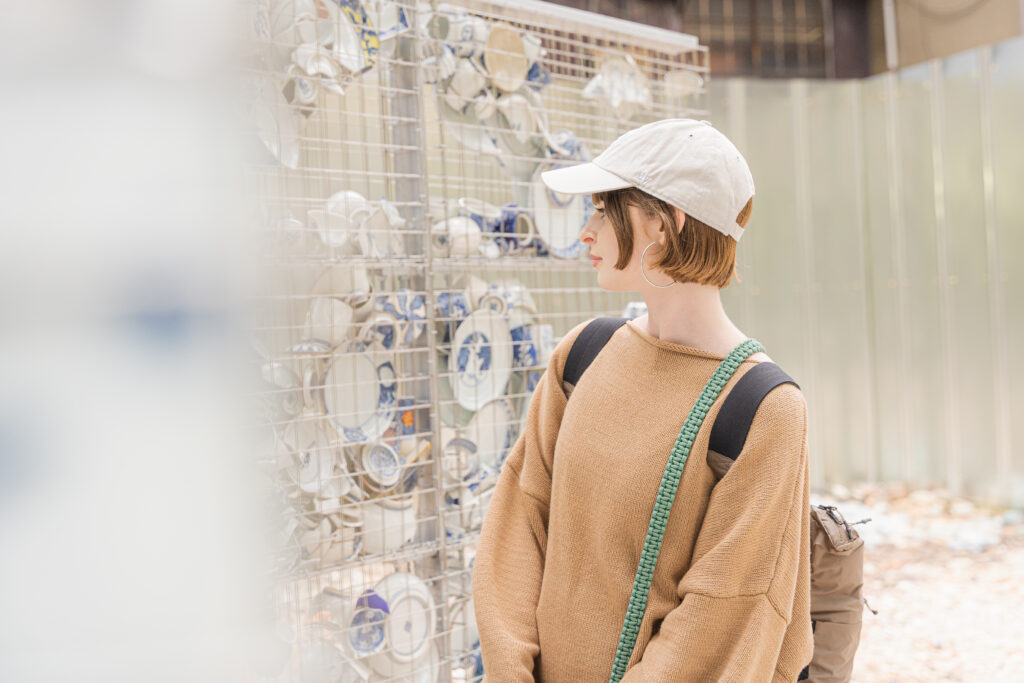
インマ・バレロの“Breaking Walls”、伊藤佑町家跡地にて
古い茶室の中にある展示も。ロエベの展示は質素で少し怖い雰囲気の茶室の中にあった。
私の一番のお気に入りは、誉田屋源兵衛という帯屋での展示だった。特に展示のために、普通一般公開していない部屋を開けていたので、面白かった。単なる「アートツーリズム」よりもっとディープな感じで、特別感があった。
二条城の展示では、どうやってお城の空間を使い、それがどう作品と建築と連結したのか気になります。
Zara: 展示は、建物の奥にある台所にあって、それも良かった。私たちは雨が降っててどんよりした日に行って、暗すぎて展示されているものを見るのにめっちゃ集中しなきゃいけなかった。それで返って没入できた。
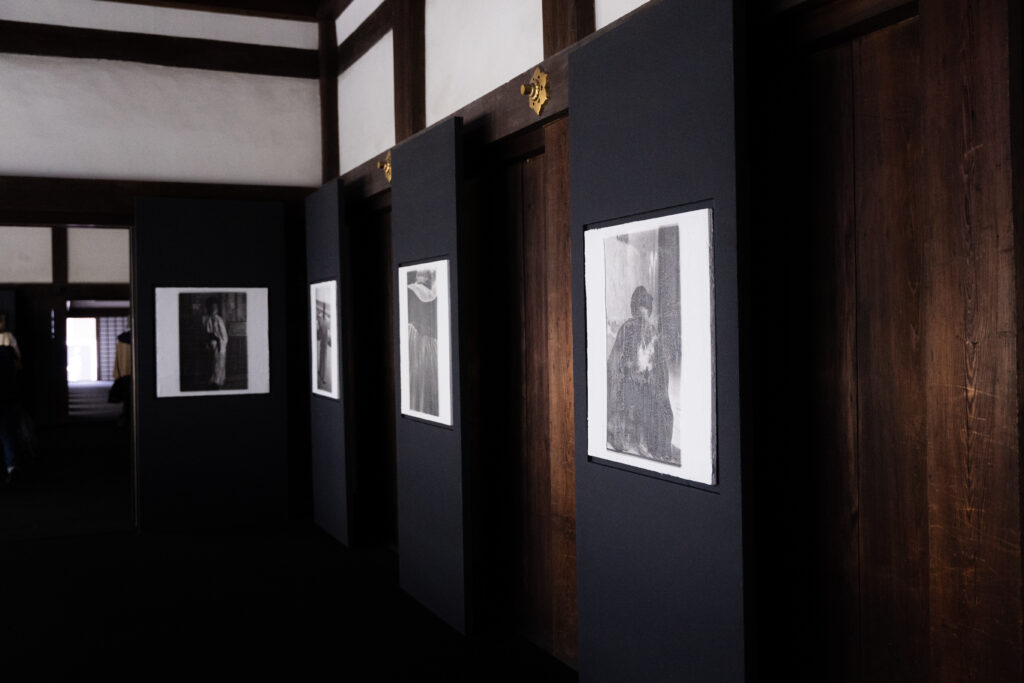
二条城二の丸御殿の台所、御清所で開催された高木由利子の展示 ”Parallel World”
どの作品が一番でしたか?
Zara: 誉田屋のスペースが気に入った。建物の中には二つのスペースがあって、一つ目は、ドアが空いていて真ん中に素敵なガーデンがあった。で雨が降っていたから、雨の音も聞こえて京都風のお庭を見ながら展示も見れて、面白かった。そこからもう一つのスペースに繋がっている廊下を通り抜けて、小さな階段を三階まで上がった。ディープな京都の中に入っていく気分で、アートだけでなく空間についてももっと知りたくなった。
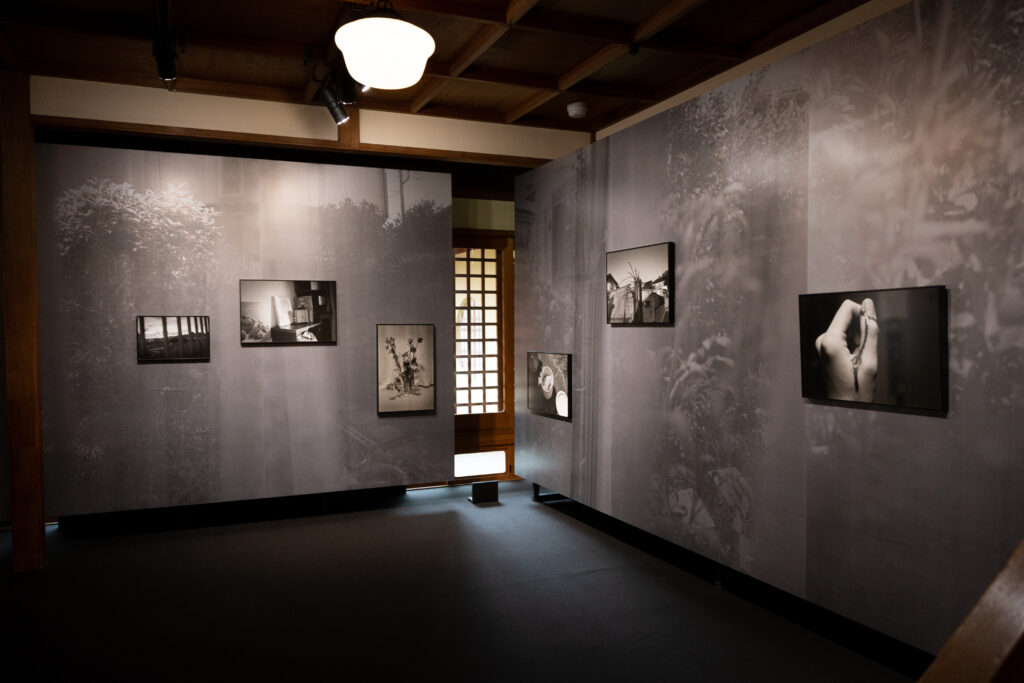
頭山ゆう紀「透視する窓辺」”A dialogue between Ishiuchi Miyako and Yuhki Touyama” 誉田屋源兵衛竹院の間
でも二条城も素晴らしかった。中に入ってすぐ天井まで届く巨大な写真が目の前にあったから一番印象的だった。私はファッションフォトに興味があるから、特に興味が湧いたのかも。全てが綺麗にレイアウトされていて素敵だった。私たちが行った日、自然光が綺麗に入ってて、建物自体を体で感じ取ることができ、建物の歴史について考えさせられた。台所だったという点も、より和やかな気持ちになった。
今回のテーマである”border”をザラさん自身の経験とどのように結び付けることができますか?作品と個人的な繋がりを感じられましたか?
Zara: デニス・モリスの展示かな。古いイギリスのリビングルームの模型が作られていて、懐かしい気分だった。でも、テーマを意識しながら展示を回らなかったかな。ただ作品を、そのままに感じて、反応してたと思う。
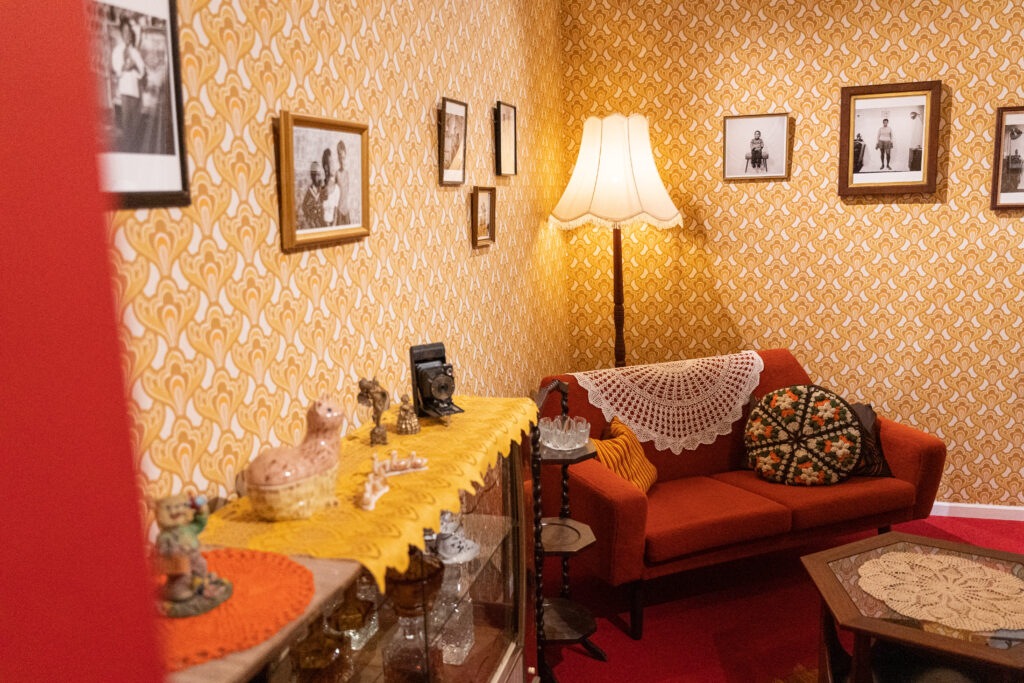
デニス・モリス“Colored Black”、世界倉庫にて
最後に、もっとも感じた部分を教えてください。
Zara: そうね、外国人として、あまり考えずありのままでものに反応することができたことが素晴らしかった。
ザラさんにとってKYOTOGRAPHIEは、ある意味、特別な形をもった観光という感じでしたか? つまり、普段行けない所に行けて、それも「京都」感、「ジャパニーズ」感があったんでしょうか?
Zara: 単なる観光というより、冒険みたいだった。地図をたどって特定の場所に辿り着くけど、KYOTOGRAPHIEに参加することで色々なロケーションを探検することができた。自分が思ったよりもっとインタラクティブで面白かった。また行きたい、二日間は全然足りなかった!
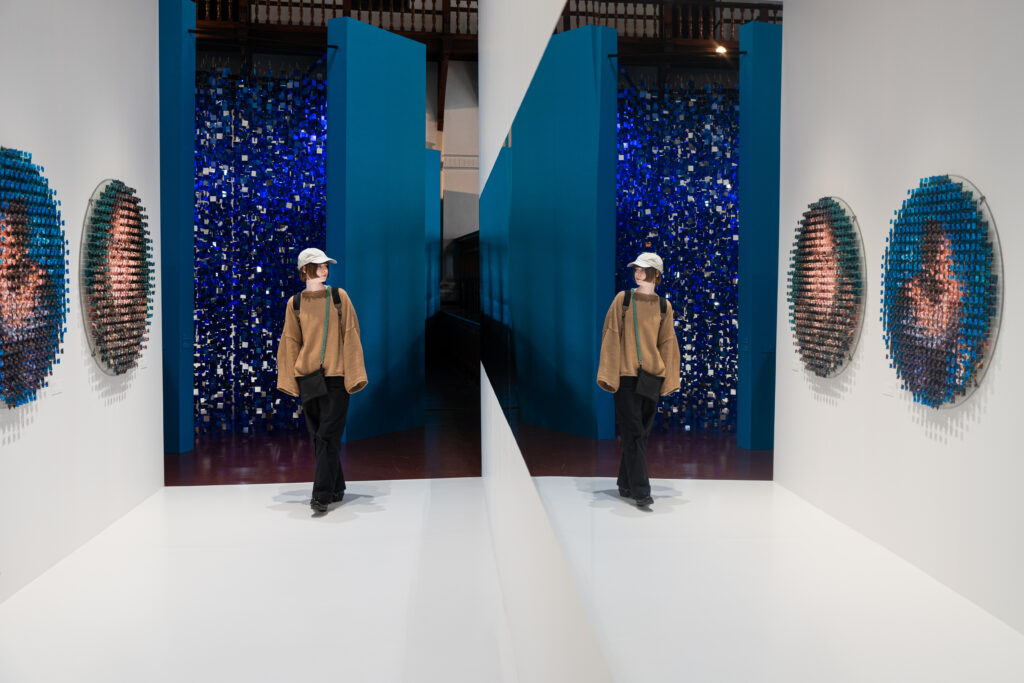
マベル・ポブレット “Where Oceans Meet” 、京都文化博物館別館
———————————————————–
To cover the 11th KYOTOGRAPHIE event, Wooly put together a special team for the opening weekend, for our official report.
The theme for this year’s KYOTOGRAPHIE is “border.”
With borderless staff from England, Sweden, Fukuoka, and Tokyo, Team Wooly spent four days visiting the exhibits that caught their eyes – repeating the process of breaking up and regrouping – to explore KYOTOGRAPHIE’s “border.”

Yuriko Takagi’s exhibition ”Parallel World” at Nijo-jo Castle Ninomaru Palace Daidokoro Kitchen and Okiyodokoro Kitchen
This spring, the city of Kyoto transformed into a massive modern art museum – for one month only.
With this year marking the 11th KYOTOGRAPHIE, the event will disperse and exhibit domestic and overseas modern artworks with a focus on photography across 15 main venues and 100 additional spots for the satellite festival kg+.
It is an ambitious art event inspired by Les rencontres de la Photographie in Arles, but is unlike any other in the world – combining the works of globally renowned artists and the deep local history of the city for an immersive art experience.
In this year’s KYOTOGRAPHIE, themed “border,” the exhibition by photographer Takagi Yuriko presented inside Nijo Castle was the exhibition that most impressed the Wooly editorial team. Inside the Ninomaru Goten (Second Palace) of the world heritage site Nijo Castle, the exhibition is stretched out across six gallery spaces, one movie room, and even using the garden as an additional outside exhibition space.

The entrance to Yuriko Takagi’s exhibition ”Parallel World” at Nijo-jo Castle Ninomaru Palace Daidokoro Kitchen and Okiyodokoro Kitchen
The highlight of this exhibition is the presentation – a total of 150 pieces are exhibited in a way that brilliantly harmonizes with the deep atmosphere of the ancient architecture. The native costumes that stand tall like a large folding screen intersect with the photographs of the current cutting edge mode fashion. The artist’s inquisitive mind in a wide range of fields and insightfulness to explore history deeply sits spiritually and blends within the space of the world heritage site, and intensely illuminates. We stood in awe and in a daze amazed by the art, architecture and human skill that transcended time and space.

Yuriko Takagi ”Parallel World” at Nijo-jo Castle Ninomaru Palace Daidokoro Kitchen and Okiyodokoro Kitchen
The exquisite ambitious installation and presentation of this exhibition was created with the support of Tane Tsuyoshi, who we’ve interviewed and featured in the magazine previously. Here we could really see why he is currently gaining attention and offers from art museums all over the world.
Zara, who is a former member of Wooly’s editorial team and a model, joined in for this time’s official team. We interviewed her about her impressions as someone from the UK, on the magnificent collaboration of Japan “wa” and art.
A short interview with Zara

What was your overall impression of the event? Can you describe how the other spots were composed and how the works were displayed?
Zara: I had no expectations going into it so I was really surprised that the festival consisted of all of these different exhibitions dotted around not too big of an area. It was quite close together in these different buildings. For example, my favorite places were obviously Nijo-jo, but apart from that there was also a place called Sekai Soko, which was nice. That was where the Dennis Morris exhibition was, and that was on the second floor of this new space. It was actually a partnership with a club called “WORLD KYOTO” which I went to seven years ago. But because of Corona, people couldn’t really go to clubs, so they made this place a more Corona friendly space. So that was interesting.

Inma Barrero “Breaking Walls” at the former site of Itoyu Machiya
There were also exhibitions in old tea houses. The Loewe exhibition was in this really austere, scary looking teahouse. My favorite was this place called Kondaya Genbei, an obi maker.. Especially for the exhibition, they opened up this room that isn’t normally open to the public, which was really interesting. It was more than “art tourism,” something a little bit deeper. A little bit more special. Everywhere was a place that you normally couldn’t go into, whether it be an austere fancy Kyoto building, or places that you couldn’t go into anyway. That was really impressive and really fun.
I’m curious about how the exhibition at Nijo-jo made use of the space, how it worked in conjunction with all of the artworks, as well as the architecture of the building.
Zara: The exhibition was in the daidokoro space, which is a separate room in the back of the building. So that was good too. We went on a day that was rainy and gloomy, and it was so dark that you had to really concentrate to even see the things on display, which I liked.

Yuriko Takagi ”Parallel World” at Nijo-jo Castle Ninomaru Palace Daidokoro Kitchen and Okiyodokoro Kitchen
Which work was your favorite from the whole festival? How did it make use of Kyoto as the exhibition space?
Zara: I liked the Kondaya space, which used two spaces in this building. The first space the doors were open and in the middle, there was a lovely garden. Since it was raining you could hear the rain and see the Kyoto style garden whilst seeing the exhibit, which was really interesting. You could walk through this connecting space, to the place that took you up three floors, through this tiny staircase. It felt like you were going into deep Kyoto, and it made you want to learn more about the space, as much as the art.

Yuhki Touyama for “Views through my window. A dialogue between Ishiuchi Miyako and Yuhki Touyama” at Kondaya Genbei Chikuin-no-Ma
But also Nijo-jo was amazing. That was the most impressive, because you walked in and there were these up to the ceiling, gigantic pictures. I have an interest in fashion photography, so it was amazing. It was so beautifully laid out and interesting. And the day we went, and the natural light, and you could feel like the building itself, you were just thinking about the history of the building. It felt so austere, although it was just the kitchen.
How could you relate the theme of “border” to your own experience? Could you feel a personal connection with any of the works?
Zara: I guess the Dennis Morris exhibition – they made a mockup of an old English living room. There was a nostalgic feeling. But, I didn’t really go through the exhibition with the theme in my mind actually. I was just reacting to the pieces as it was

Dennis Morris “Colored Black” at Sekaisoko
It sounds like you were mostly impressed by how the pieces included Japanese culture, and how it made use of the space and worked in harmony with it.
Zara: Yeah, for me that was the most impressive, because I like to react blindly, as a foreigner.
So the whole festival was a very special form of sightseeing, because you were able to go to all of these places that you couldn’t normally go to, but it was also very “Kyoto” or “Japanese”?
Zara: It felt more like an adventure, rather than sightseeing – you would follow the map to see the festival, to get to these specific places. But, going through the festival you were able to explore all of these different locations. It was way more interactive and interesting than I expected. I want to go back, two days weren’t enough!

Mabel Poblet “Where Oceans Meet” at the Museum of Kyoto Annex



